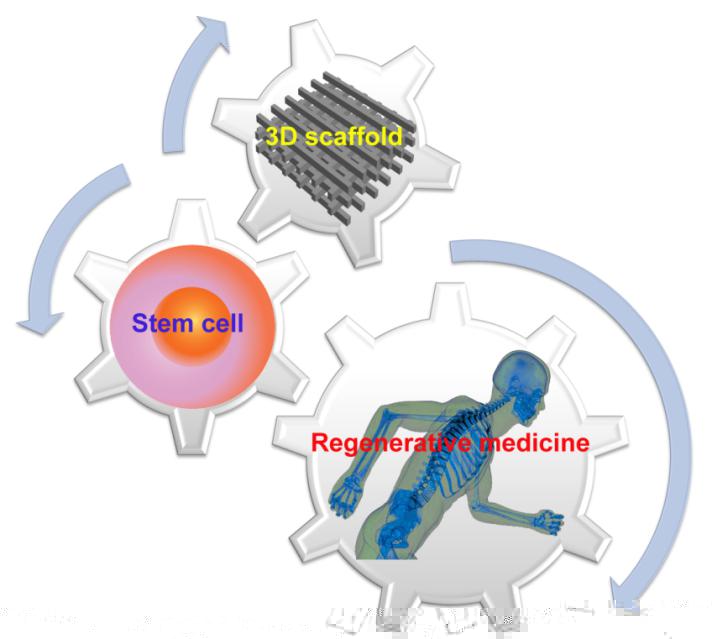Looking into the Future: Toward Advanced 3D Biomaterials for Stem-Cell-Based Regenerative Medicine
On Feb. 16th 2018, the world famous Biomaterial Journal:Advanced Materials (IF=19.791) online published the work from Key Laboratory for Developmental Genes and Human Disease, Ministry of Education, Institute of Life Sciences, Southeast University. Prof. Mingliang Tang from Southeast University and Prof. Zhongming Liu from Tongji University is the co-first authors, Prof. Renjie Chai from Southeast University and Prof. Jiuhong Kang from Tongji University is the co-corresponding authors for this manuscripts.
Stem-cell-based therapies have the potential to provide novel solutions for the treatment of a variety of diseases, but the main obstacles to such therapies lie in the uncontrolled differentiation and functional engraftment of implanted tissues. The physicochemical microenvironment controls the self-renewal and differentiation of stem cells, and the key step in mimicking the stem cell microenvironment is to construct a more physiologically relevant 3D culture system. Material-based 3D assemblies of stem cells facilitate the cellular interactions that promote morphogenesis and tissue organization in a similar manner to that which occurs during embryogenesis. Both natural and artificial materials can be used to create 3D scaffolds, and synthetic organic and inorganic porous materials are the two main kinds of artificial materials. Nanotechnology provides new opportunities to design novel advanced materials with special physicochemical properties for 3D stem cell culture and transplantation. Herein, the advances and advantages of 3D scaffold materials, especially with respect to stem-cell-based therapies, are first outlined. Second, the stem cell biology in 3D scaffold materials is reviewed. Third, the progress and basic principles of developing 3D scaffold materials for clinical applications in tissue engineering and regenerative medicine are reviewed.

Publisher:update:2018-04-03
